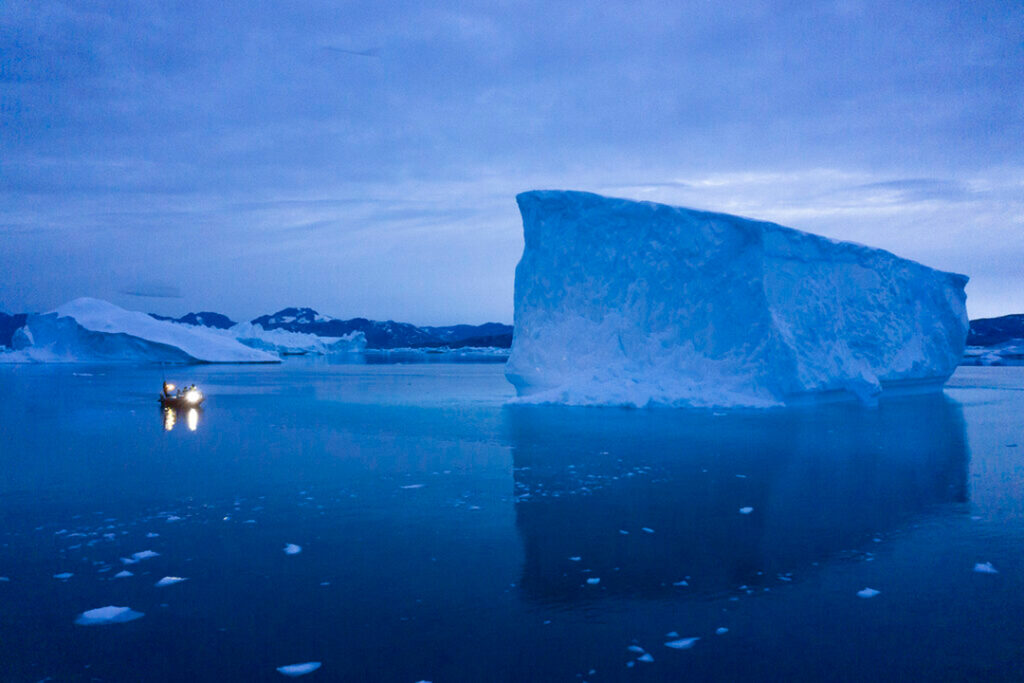Indo-Pacific Defense FORUM Staff
When it comes to engagement in the Arctic, China’s approach is much softer than its aggressive tactics in the South China Sea, where it remains in constant disagreement with nations about maritime rights and often instigates spats over freedom of navigation, according to some Arctic experts.
The reasons behind the contrasting approaches are many. Two scholars agreed that China faces an increasingly complex atmosphere in its attempts to contribute to the intergovernmental Arctic Council, collaborate with Arctic states and make the case that the future of the Arctic region is a matter of Chinese national security.
“What we see in the Arctic is an increasingly complex mix of cross-cutting global and regional security dynamics that plays out in the Arctic. For China, this means it has become more difficult to maneuver in the Arctic,” said Dr. Camilla T.N. Sorensen, associate professor at the Institute for Strategy and War Studies, Royal Danish Defence College.
“China is still trying to cross the river by feeling the stones,” added Dr. Marc Lanteigne, associate professor at The Arctic University of Norway, Tromso, who called China “very much a newcomer” in the Arctic. “China is really starting to focus on the idea of how the Arctic fits” with its strategic priorities.
Sorensen and Lanteigne made their remarks in mid-September 2021 during the Arctic Academic eTalks, a bimonthly virtual forum on key issues affecting the Arctic. Participants include scholars and practitioners from Canada, Denmark, Finland, Germany, Iceland, Norway, Sweden, the United Kingdom and the United States. The talks are co-hosted by U.S. Northern Command and its commander’s magazine, The Watch; U.S. European Command; U.S. Indo-Pacific Command; and the North American and Arctic Defence and Security Network.
Sorensen acknowledged that China is a great power but said that its activities in the Arctic, particularly where Greenland is concerned, show a more timid approach. Chinese development in Greenland remains “relatively modest.” She surmised that China is playing a “wait-and-see” game, acting more as an observer than a participant to see whether the U.S. delivers on its promises to Arctic states and how that compares to what China has to offer.
“The Chinese seem to be in no rush to be in the Arctic,” Sorensen said, calling China’s strategy a tactical retreat. “In a way, the tactical retreat could be a more sophisticated strategy from China that it’s developing over the years. They’re following the development in the region and adjusting their strategy without huge, disproportional risks and failures. Anything they’ve tried has failed, so they’re taking this wait-and-see approach.”
Sorensen said this strategy makes her question the difference between what she labeled as China’s hybrid activity in the region and normal activity. Sorensen explained that China operates with low transparency and complex, overlapping relationships among Chinese entities. Ambiguity among state-owned and private companies and universities adds to the challenge of categorizing Chinese activities and assessing the amount of risk associated with their involvement.
“The [Chinese Communist] Party is very present and involved but to different degrees,” Sorensen said. “It’s always difficult to know who you’re dealing with and what the driving motives are.”
Lanteigne said he began asking about China’s Arctic interests a decade ago when the response was that China might make it a priority in 20 to 30 years. Chinese officials, however, began having conversations a lot sooner. Lanteigne pointed to discussions in 2017 on how to integrate the Arctic into China’s One Belt, One Road infrastructure scheme while defining the Arctic as an international space. “China is still trying to work through some of the specifics,” he said. (Pictured: A boat passes icebergs in eastern Greenland. As warmer temperatures melt the ice, the Arctic region is taking on new geopolitical and economic importance.)
The Arctic may not seem to make sense as a strategic priority for China geographically, given that mainland China is 1,500 kilometers (932 miles) from the Arctic Circle, but Chinese officials say it’s not a matter of distance, Lanteigne said. “They don’t want to be shut out of the region, and China is saying, ‘What’s happening in the Arctic is affecting us, our weather, our economic interests. Is it not fair for us to then have some kind of stake?’”
Questions remain, however, on how a more active China asserting its national interest in the Arctic might affect political, security and military developments in the region.
IMAGE CREDIT: THE ASSOCIATED PRESS

